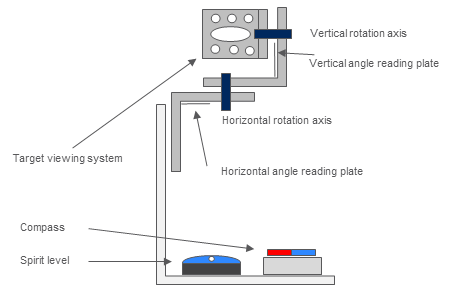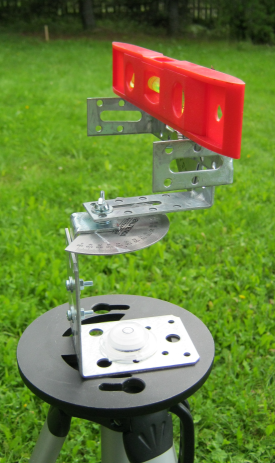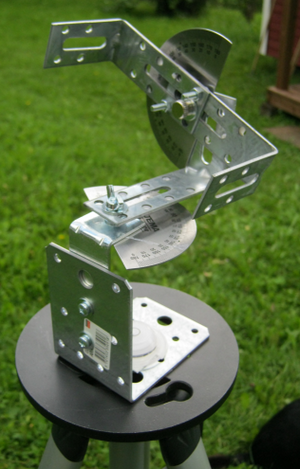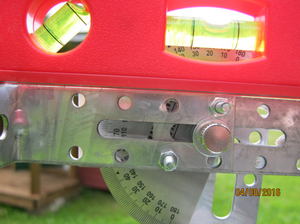I’m novice when it comes to looking planets via telescope. Well, I actually would like to take decent photos but have realised that it is not as easy as it sounds…
One of the basic skills when searching planets, or other objects in the sky, is to estimate the angles. There are several tips for estimating small angles
- Positions and Sizes of Cosmic Objects in space book
- Measuring The Sky in One-Minute Astronomer
- A Handy Guide to Measuring the Sky
But how about if you are a beginner, and want to compare what-is-what, and would like to compare what you found with the Stellarium, then how would you estimate the current location of the object?
Challenge: How would you estimate the current location of the object (ie. angles)?
Solution:
Make a device that measures horizontal angle deviation from South (or West, North, East), and vertical angle deviation from horizon.
- To find South, one can use the shadow method, or maps. (ie. not counting on compass).
- To find horizon, when you cannot see it, one can use spirit level.
The idea of the solution is shown below.

The implementation of the solution is made by using nailing plates (metal angle brackets) for the frame. Solution is shown in the photo below. No tools were used when constructing this device. The angle scale reading plate is taken from protractor. All the material was found in a local hardware store.
Photo on left. Getting protractor readings 0-position:pointing to south, and using spirit level.
Photo on right. The target is found via the top-left holes in the angle bracket.


Improvements are needed
There are several improvements ideas for this. For example, I was not able to fix the reading “0” of protractors, so one need to substract the angles in order to get reading. And that is a little complicated, see photo below. Well, you can make your version a better one. Another improvement is needed in the target viewing, but this works for now…

See also
- Inclinometer
- Tiltmeter
- android applications for something similar
